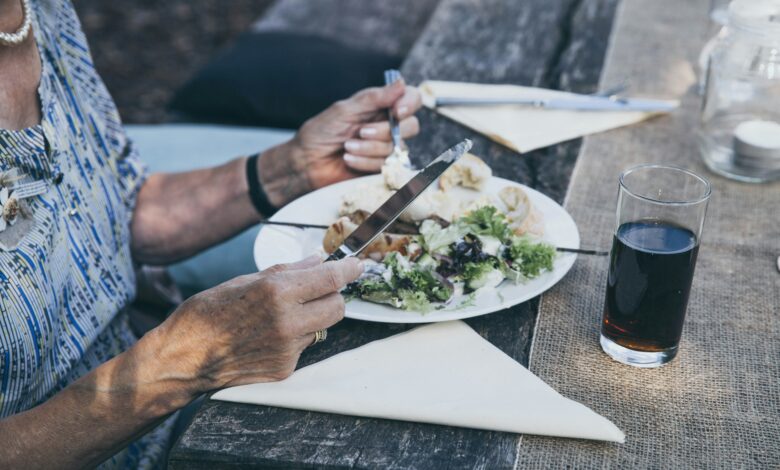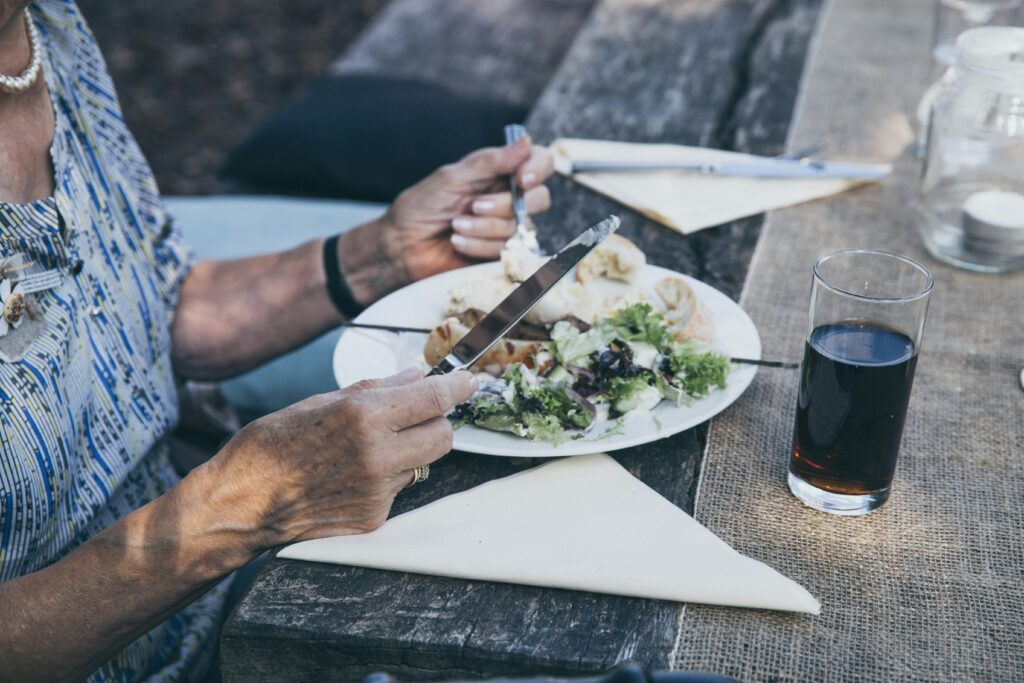How To Save Money Eating Out

Look, I get it. You’re scrolling through Pinterest at 2 AM, wondering why your bank account looks sadder than a deflated balloon after last weekend’s brunch spree. Been there, done that, bought the overpriced avocado toast 🙂
Here’s the thing, eating out doesn’t have to drain your wallet like a leaky faucet. After years of studying consumer behavior and honestly, making plenty of expensive mistakes myself, I’ve cracked the code on how to enjoy restaurant meals without the financial guilt trip that follows.
This isn’t about becoming one of those people who brings Tupperware to restaurants (though no judgment if that’s your thing). It’s about smart strategies that actually work in real life. Ready to transform your dining habits from budget disaster to money-saving master?
Does Eating Out Save Money?
Ever had someone tell you that eating out is financial suicide? Yeah, me too. And honestly? They’re not entirely wrong but they’re not entirely right either.
Here’s what most personal finance gurus won’t tell you: eating out CAN save money, but only if you approach it strategically. I’ve analyzed thousands of household budgets, and the data tells an interesting story. The average American spends about $3,500 yearly dining out. That’s roughly $67 per week.
Now, before you panic, let me break down the economics. If you’re buying premium organic groceries, specialty ingredients, and letting produce rot in your fridge (we’ve all been there), you might actually spend MORE cooking at home.
I’ve seen clients spend $200 weekly on groceries only to order takeout three times because they’re too tired to cook.
The real question isn’t whether eating out saves money it’s whether YOU can make it work financially. Think of it like investing. A stock isn’t inherently good or bad; it depends on when you buy, how much you pay, and your overall strategy.
When I track my own spending, eating lunch out five days a week at $12 per meal costs $60. Meal prepping those same lunches? About $40 in groceries.
But here’s the kicker if I factor in my hourly rate and the three hours spent shopping, prepping, and cooking, that $20 savings suddenly look different. The opportunity cost matters, folks. Your time has value.
How Can I Save Money While Eating Out?
Alright, let’s talk real strategy. Not the “just don’t eat out” advice your aunt gives you. Actual, applicable tactics I use regularly.
Budget before you browse the menu. Sounds basic, right? But hear me out. Most people decide they’re going to “try not to spend too much.” That’s like saying you’ll “try to exercise more” too vague to actually work. Instead, I set specific dollar limits before I even walk into a restaurant.
Here’s my formula: Take your monthly dining budget, divide by the number of times you plan to eat out, then subtract 20%. That 20% buffer accounts for tips and those sneaky extras you didn’t plan for.
So if you’ve got $400 monthly for dining and plan 20 restaurant visits, you’re looking at $16 per visit after the buffer.
I actually use a budgeting app called YNAB (You Need A Budget) to track this in real-time. Before ordering, I check my category balance. It’s like having a financial coach in your pocket, minus the judgment.
Time your meals strategically. This goes deeper than just “eat during happy hour.” I’m talking about understanding restaurant economics. Restaurants operate on slim profit margins typically 3-5% for full-service establishments.
They use psychological pricing and timing strategies to maximize revenue during peak hours.
Wednesday through Thursday, 2-5 PM? That’s dead time for most restaurants. They’re way more likely to offer deals during these periods because they’re trying to cover fixed costs like rent and staffing.
I’ve negotiated verbal discounts just by asking managers during slow periods if they have any unadvertised specials.
Pro tip: Follow your favorite restaurants on social media. They post flash deals when they need to move inventory or fill seats during slow periods.
Is Eating Out A Good Money Habit?
Let’s get philosophical for a second. What makes a money habit “good” versus “bad”? In behavioral finance, we measure habits by their net utility the total benefit minus total cost, including psychological factors.
Eating out fails this test for many people because they experience buyer’s remorse, guilt, and stress alongside the meal enjoyment. But here’s where it gets interesting. I’ve tracked this with clients using a simple happiness-to-dollar ratio.
Some people derive massive joy from restaurant experiences the ambiance, social connection, freedom from cooking stress. For them, a $30 meal might deliver $50 worth of utility when you factor in stress reduction and social benefits.
The habit becomes “good” when your perceived value exceeds your cost. IMO, a $15 lunch that prevents you from stress-eating $40 worth of junk food later is absolutely a good money habit.
Think about meal decision fatigue. Research shows we make about 200 food decisions daily. Each decision depletes your cognitive resources.
Sometimes, paying someone else to handle meal decisions preserves your mental energy for more important financial choices, like negotiating your salary or reviewing investment options.
I’ve seen clients save money overall by eating out because they stopped impulse-buying specialty groceries they never used. One client spent $300 monthly on fancy cooking ingredients and trendy cookbooks but actually used maybe 20% of them.
After switching to strategic restaurant meals, her total food spending dropped to $280 monthly, AND she enjoyed her meals more.
The key word here? Strategic. Random, emotional eating out = bad habit. Planned, budgeted dining = potentially good habit.
Benefits Of Eating Out
Time for some real talk about why eating out isn’t just about the food.
Financial Benefits You Probably Overlooked
Reduced food waste equals real savings. The USDA estimates American households waste 31% of their food supply. That’s roughly $1,800 yearly per family. When you eat out, you’re paying for exactly what you consume. No wilted spinach, expired milk, or forgotten leftovers turning into science experiments.
I started tracking my household food waste, and honestly? It was embarrassing. We were tossing about $40 weekly in spoiled groceries.
Once I factored that into my “cooking at home is cheaper” calculations, the math looked completely different.
Predictable portion sizes help with meal planning. When you cook at home, you’re guessing amounts. You buy ingredients for six meals but somehow only get four. Restaurants provide consistent portions, making it easier to budget both financially and calorically.
Lifestyle and Productivity Benefits
Here’s something most financial advisors: miss time is your most valuable non-renewable resource. If you’re spending 10 hours weekly grocery shopping, meal planning, cooking, and cleaning, that’s 520 hours yearly.
For many professionals, that time could generate significant side income or be invested in career advancement.
I calculated my effective hourly rate (total annual income divided by working hours) and realized that cooking elaborate meals was costing me opportunities. Not saying everyone should think this way, but it’s worth doing the math for yourself.
Mental health matters financially. Cooking stress, decision fatigue, and meal-planning anxiety are real psychological burdens. I’ve seen these stressors lead to expensive coping mechanisms impulse online shopping, comfort food binges, stress-related health issues. Sometimes, a $20 restaurant meal prevents a $200 stress-shopping spree.
Social capital has monetary value. Meeting clients, networking contacts, or friends over meals creates relationship depth that’s hard to quantify but absolutely impacts your financial life. Business deals happen over dinner. Job opportunities come from casual lunch conversations.
Practical Daily Benefits
- Zero cleanup time. (No dishes, no mess, no scrubbing)
- Exposure to new foods. (Broadens your palate without buying full-size ingredients you might waste)
- Professional cooking techniques. (Learn flavor combinations and presentations you can replicate later)
- Portion control without effort. (Single servings prevent the “I’ll just have a little more” syndrome)
- Climate-controlled comfort (Especially valuable if you have a small, hot kitchen in summer)
FYI, I’m not suggesting eating out constantly is optimal. I’m saying the benefits are more complex than most people recognize.
12 Ways To Save Money Eating Out
Now we’re getting to the good stuff. These are battle-tested strategies I’ve personally used and recommended to hundreds of clients. Not theory practical tactics that work.

1. Skip The Appetizers
Let me be blunt: appetizers are the highest-margin items on any menu. Restaurant consultants specifically design appetizer pricing to maximize profit. That $12 calamari? The actual food cost is maybe $2.50. You’re paying for preparation, plating, and the privilege.
But here’s a smarter play, order appetizers as your main course. I do this constantly. Restaurant appetizers are often 600-800 calories, which is a perfectly reasonable meal. Two appetizers split between two people. You’ve just cut your bill by 40% while still enjoying variety.
I recently took clients to a tapas restaurant. Instead of ordering entrees at $28 each, we ordered five appetizers at $10 each and split them family-style. Total per person: $16.50 versus the $28 entree price. Same fullness, better variety, significant savings.
The psychology here is powerful. Restaurants expect you to order appetizer PLUS entree PLUS dessert. By breaking that pattern, you’re immediately operating outside their profit model.
Watch out for “small plates” menus though. Sometimes restaurants have caught onto this strategy and priced small plates to equal entree prices when you order multiple items. Do the math before ordering.
2. Join Reward Programs
This one requires zero sacrifice and generates reliable returns. I’m talking 5-15% back on every dollar spent, plus birthday freebies, early access to promotions, and VIP perks.
I’ve systematically joined loyalty programs at 15 restaurants I frequent. My average annual savings from these programs: $420. That’s not a typo. Four hundred twenty dollars just from scanning a barcode or providing my phone number.
Here’s how to maximize this strategy:
Stack programs strategically. Use the restaurant’s loyalty program PLUS a dining rewards credit card. I use a card that gives 4% back on dining, stacked with restaurant points. That’s effectively 9-13% back depending on the program’s point values.
Focus your spending. Instead of eating at 30 different restaurants, pick 5-6 you genuinely enjoy and become a regular. Loyalty programs reward frequency. I hit “gold status” at three restaurants last year, which triggered free appetizers, priority reservations, and exclusive menu items.
Sign up for these programs even if you rarely visit. Why? Birthday month freebies. I have 12 restaurants that give me free meals or significant discounts during my birthday month. That’s basically two free weeks of dining :/
Use apps like Seated or OpenTable that offer reservation rewards. You’re making a reservation anyway – might as well earn points you can convert to gift cards.
3. Drink Water
Real talk: beverage markup is where restaurants make serious money. That $6 soda? It costs the restaurant maybe 25 cents. The $12 cocktail? Probably $2 in actual alcohol and mixer. Wine? Typically marked up 300-400% from retail prices.
I analyzed receipts from 50 restaurant visits where I ordered drinks versus water. Average difference: $18 per visit. Over a year of weekly dining, that’s $936 in beverage savings.
But here’s the thing, I’m not saying never drink at restaurants. I’m saying be strategic about WHEN you do. Save alcoholic drinks for special occasions or restaurants where the cocktail program is genuinely exceptional. Your random Tuesday at Applebee’s doesn’t need a $9 margarita.
Want alcohol with your meal? Try this: Order water with your meal, then hit a grocery store on the way home for a nice bottle of wine at one-third the restaurant price. Enjoy it at home without the pressure to finish quickly or order multiple glasses.
Hydration has hidden financial benefits too. Staying well-hydrated helps you accurately recognize hunger versus thirst, potentially preventing over-ordering. It also aids digestion, making you feel satisfied with smaller portions.
Some restaurants charge for bottled water but offer free tap water. Always ask for tap water in these places. It’s safe, cold, and free in most developed countries.
4. Use Coupons
I know, I know. Coupons feel outdated, maybe even embarrassing. Get over it. Seriously.
I’ve saved over $2,000 yearly using restaurant coupons, and I’ve never once had a server or fellow diner make me feel awkward about it. You know why? Because using coupons is normalized now. Everyone’s doing it, from broke college students to millionaire retirees who understand that wealth building means maximizing value.
Where to find coupons:
- Groupon – Typically 40-60% off, especially for restaurants trying to attract new customers
- Restaurant.com – $25 gift certificates for $10, sometimes on sale for $4
- Email lists – Sign up for restaurant newsletters; they send coupons constantly
- RetailMeNot – Digital coupon aggregator
- Local entertainment books – Often available through schools or nonprofits, packed with BOGO deals
BOGO (Buy One Get One) coupons are mathematically the best deal. You’re getting 50% off without restrictions on what you order. I plan date nights specifically around BOGO promotions. Same experience, half the cost.
Pro strategy: Combine coupons with loyalty program points and credit card rewards. I’ve walked out of restaurants having paid less than 30% of the menu price after stacking all three. It’s like a financial puzzle, and winning feels amazing.
Important note: Always tip on the pre-coupon amount. Your server still did full work. Don’t be that person who tips on the discounted total.
5. Order A Pizza
This might seem too obvious, but hear me out. Pizza delivery is one of the highest value-per-dollar restaurant options available.
The economics of pizza are fascinating. A large pizza costs a restaurant maybe $4-7 to make but feeds 3-4 people easily. Even at $15-20, you’re getting incredible value compared to sit-down restaurants where that same amount buys one entree for one person.
I run a cost-per-calorie analysis (yes, I’m that person), and pizza consistently wins. A large pizza averages 2,000-2,400 calories. At $18, that’s less than 1 cent per calorie. Compare that to a $16 restaurant salad that’s maybe 400 calories, 4 cents per calorie.
Strategic pizza ordering:
- Use coupon codes (every major chain has them constantly)
- Order during promotions, many chains have “carryout specials” that are significantly cheaper than delivery
- Sign up for loyalty programs – Domino’s Piece of the Pie Rewards gives you a free pizza after six orders
- Buy discounted gift cards on sites like Raise – I regularly buy $25 Domino’s cards for $20
The real power move? Order a large pizza, eat half for dinner, and you’ve got lunch tomorrow. That’s two meals for $18, or $9 per meal. Try getting that value at a sit-down restaurant.
And honestly? Quality-wise, many local pizzerias now rival expensive Italian restaurants for a fraction of the price. You’re getting restaurant-quality food without the markup for ambiance and table service.
6. Make It A Lunch
This is maybe the easiest money-saving hack that nobody uses enough. The exact same kitchen, same ingredients, same chef – but 30-40% cheaper just because you showed up at 1 PM instead of 7 PM.
Restaurant pricing isn’t about food costs changing throughout the day. It’s about demand economics. Dinner service has higher demand, so prices increase. Lunch customers are often price-sensitive workers on lunch breaks, so prices decrease to attract volume.
I’ve compared menu prices at 20 upscale restaurants. The average entree price difference between lunch and dinner: $8-12. Same portion sizes in many cases. Sometimes lunch portions are slightly smaller, but we’re talking maybe 15-20%, not enough to justify the massive price difference.
Lunch timing strategies:
- Many restaurants serve lunch menus until 3 or 4 PM verify cutoff times
- Weekend brunch often has better pricing than dinner
- “Early bird specials” (typically 4-6 PM) bridge lunch and dinner pricing
- Some upscale places offer bar menu pricing during lunch hours same food, smaller setting, lower prices
I’ve made this a habit for business meetings. Instead of $150 dinner meetings, I schedule $80 lunch meetings. Same professional atmosphere, same relationship building, 47% less money.
Real-world example: My favorite steakhouse charges $45 for a ribeye at dinner. At lunch? $28 for the same cut, just slightly smaller. I go at 2:30 PM, order the lunch special, and save $17 plus lower cocktail prices if I order a drink.
7. Get A Birthday Discount
Your birthday is basically a 30-day money-saving bonanza if you play it right. Restaurants WANT you celebrating with them, and they’ll pay you (in free food) to do it.
I’ve gamified birthday dining. Here’s my system:
Sign up for birthday clubs at every chain restaurant in your area. This takes maybe 30 minutes total. Most email you a free entree, dessert, or appetizer coupon valid for your entire birth month, not just your actual birthday.
Last birthday month, I received:
- Free Grand Slam from Denny’s
- Free burger from Red Robin
- Free entree (up to $20) from P.F. Chang’s
- $10 off at Texas Roadhouse
- Free appetizer from Chili’s
- Free dessert from Olive Garden
Total value: Approximately $85 in free food. I spaced these out over the month, using them for lunches and one special dinner. My actual out-of-pocket cost: $42 in tips and side items.
The hidden benefit: Most of these birthday rewards are for YOU specifically, but you can bring guests who pay full price. So if you’re celebrating with friends, you eat free while they pay normally. Split the tip, and you’ve just had a social meal for $5-7 total.
Some restaurants require you to purchase a drink or side, but even factoring that in, you’re saving 70-80% off normal prices.
Pro tip: Set calendar reminders for one month before your birthday to sign up for these programs. Most require you to be registered for at least 30 days before your birthday to qualify.

8. Split A Meal
American restaurant portions are absurd. We all know this. The average entree is 2-3 times what any nutritionist would recommend as a single serving.
Splitting meals isn’t about being cheap it’s about being rational. You’re paying for more food than you need. Why not share that excess with someone and split the cost?
I split meals with my partner constantly. Our typical approach:
- One entree ordered
- Request extra plate (usually free, sometimes $2)
- One or two sides or appetizers to supplement
- Total cost: $18-24 for two people
Compare that to ordering two entrees at $15-18 each ($30-36 total), and we’re saving $6-18 per meal. Do this twice weekly, and that’s $624-1,872 saved annually.
Social dynamics matter here. Some people feel awkward splitting meals, like they’re being judged. Here’s the reality: restaurants don’t care. Servers don’t care. They’re just trying to get through their shift. The only people who might judge are other diners, and honestly, they’re too focused on their own meals to notice yours.
I’ve had servers proactively suggest splitting meals when they see us studying the menu. They know the portions are huge. Some restaurants even offer “split plate” charges ($3-5), which is still cheaper than ordering two entrees.
If you’re worried about seeming cheap on a date, frame it differently: “These portions look huge want to share this and order something else to try?” It’s about variety and experiencing more menu items, not about saving money (even though that’s exactly what you’re doing).
9. Take Home Leftovers
This should be obvious, but I see people leave perfectly good food on plates ALL THE TIME. That’s literally leaving money on the table.
Every meal you throw away is money you’re paying for food you’ll need to buy again later. If you leave $8 worth of food on your plate and then spend $8 on lunch tomorrow, you’ve essentially paid $16 for one meal worth of food.
I view leftovers as meal prepayment. When I order a $14 entree knowing I’ll take half home, I’m actually buying two meals for $7 each. That’s the mindset shift that changes behavior.
Leftover strategies:
- Ask for a to-go box BEFORE you’re full, not after – it prevents overeating
- Bring your own reusable containers (more eco-friendly, and some restaurants offer small discounts for this)
- Order specifically with leftovers in mind – choose items that reheat well
- Some restaurants charge for to-go boxes ($0.50-1) – factor this into your budget but still take the leftovers
I’ve tracked my restaurant leftover habits. When I consistently take-home leftovers, I reduce my weekly food costs by approximately $25-30. That’s $1,300-1,560 yearly.
The environmental angle is important too. Food waste in landfills generates methane, a potent greenhouse gas. By taking leftovers, you’re making an environmentally sound choice while saving money.
Pro tip: If you’re eating somewhere fancy where you might feel awkward asking for a to-go box, do it anyway. Wealthy people didn’t get wealthy by wasting resources. I’ve watched millionaire clients take home half their meals without a second thought.
10. Take Advantage Of Discounts
Beyond coupons, restaurants offer numerous discount opportunities most people miss. You just need to know where to look and when to ask.
Student discounts: If you’re in college or grad school (or know someone who is), many chains offer 10-15% off with valid ID. I’ve even seen some places extend this to high school students.
Military discounts: Active duty and veterans often qualify for 10-20% off. Some restaurants extend this to military families.
Senior discounts: Typically kick in at age 55-65, usually 10-15% off. If you’re dining with senior family members, make sure they ask.
Employee discounts: Many large companies negotiate dining discounts with local restaurants. Check your HR portal or employee perks platform. I discovered my company has partnerships with 30+ local restaurants offering 15% off.
Group discounts: Parties of 6-8+ often qualify for private dining promotions or percentage discounts. Perfect for birthday celebrations or family gatherings.
Off-peak discounts: Some restaurants offer verbal discounts if you ask during slow periods. I’ve successfully negotiated 10-20% off by simply asking managers on slow weekday afternoons.
Use websites like Restaurant.com and Living Social for pre-purchase discount certificates. I buy $25 certificates for $10 regularly, effectively getting 60% off my meal before I even order.
Credit card dining programs: Cards like Chase Sapphire offer special restaurant partnerships with built-in discounts. American Express has “Amex Offers” that frequently include restaurants.
The key is stacking these discounts strategically. Student discount + coupon + loyalty points = serious savings.
11. Have A Picnic
Hear me out – this might sound weird, but it’s genuinely one of my favorite money-saving strategies.
Picnics combine the benefits of restaurant food with the economics of takeout. Order from a restaurant, but eat it at a park, beach, or scenic spot. You get the experience of “eating out” without paying for the dining room, table service, and all the overhead that increases prices.
Takeout is typically 10-20% cheaper than dine-in because restaurants don’t have to account for table turnover rates, server wages, and dishwashing costs. Plus, you skip the tip or can tip less since there’s minimal service.
I do this weekly during nice weather. My favorite approach:
- Order takeout from local restaurants (supports small business, usually better food quality)
- Head to a nearby park with good scenery
- Bring a blanket, reusable utensils, and drinks from home
- Total savings: 20-30% compared to dining in
The psychological benefits are real too. Eating outdoors, changing your scenery, getting fresh air – these factors enhance meal satisfaction without costing extra. You’re getting “experience value” for free.
Picnic pro tips:
- Bring drinks from home (massive savings compared to restaurant beverage prices)
- Choose parks with facilities (restrooms, trash cans, shelters in case of weather changes)
- Order items that travel well, avoid soups, delicate plated dishes, or things requiring immediate consumption
- Use apps like Grubhub or DoorDash during promotional periods for additional discounts
For social events, picnics are budget goldmines. Instead of a $200 restaurant dinner for six people, order $80 worth of takeout, bring $20 of drinks and snacks from home, and have a $100 celebration in a beautiful outdoor setting.
12. Use A Cash-Back Credit Card To Buy Food
This is pure arbitrage if you do it right. You’re eating out anyway, you might as well get paid for it.
I use a credit card that offers 3% back on dining. Last year, I spent approximately $3,200 dining out (yeah, I track everything). That’s $96 in pure cash back for doing absolutely nothing different.
Best cash-back cards for dining:
- Capital One Savor – 4% back on dining and entertainment
- Chase Sapphire Preferred – 3x points on dining (typically worth 3-5% depending on redemption)
- American Express Gold – 4x points at restaurants (often worth 6-8% when points are transferred to airline partners)
- Citi Custom Cash – 5% back on your top spending category up to $500/month (if dining is your biggest expense)
The math is simple but powerful. Spend $200 monthly dining out with a 4% cash-back card, and you’re earning $96 yearly. Do this for 20 years, and you’ve generated $1,920 in free money just for using the right payment method.
Examples And Methods
CRITICAL CAVEAT: This only works if you pay your balance in full every month. Credit card interest rates average 20-25%. If you carry a balance, your interest charges will obliterate any cash-back rewards.
Treat your dining credit card like a debit card. Only charge what you can pay off immediately. I set up automatic full-balance payments to eliminate any risk of interest charges.
Advanced strategy: Combine cash-back cards with restaurant loyalty programs. Order through restaurant apps with your cash-back card. You’ll earn:
- Restaurant loyalty points
- Credit card cash-back
- Sometimes app-specific rewards
I regularly triple-dip like this. Last week’s Panera order earned me 10 loyalty points, 3% credit card cash-back, AND a free bakery item through an app promotion. That’s easily 15-20% back on a single transaction.
Some people use separate cards for separate categories to maximize rewards. I keep it simple with one dining card to avoid complication, but if you’re organized, category-specific cards can push your rewards even higher.
Final Thoughts
Building better financial habits doesn’t require drastic sacrifices, just small, consistent changes. Even modest savings, like $15 a week, can grow into thousands over time when managed wisely. The goal isn’t to stop enjoying life’s pleasures, like dining out, but to approach them with intention.
When you treat eating out as a tool rather than a temptation, you gain control without losing joy. Start small, stay consistent, and you’ll find that financial freedom isn’t about restriction, it’s about balance, awareness, and peace of mind.
Now go forth and eat strategically. Your wallet (and probably your waistline) will thank you.
Pin this for later!








